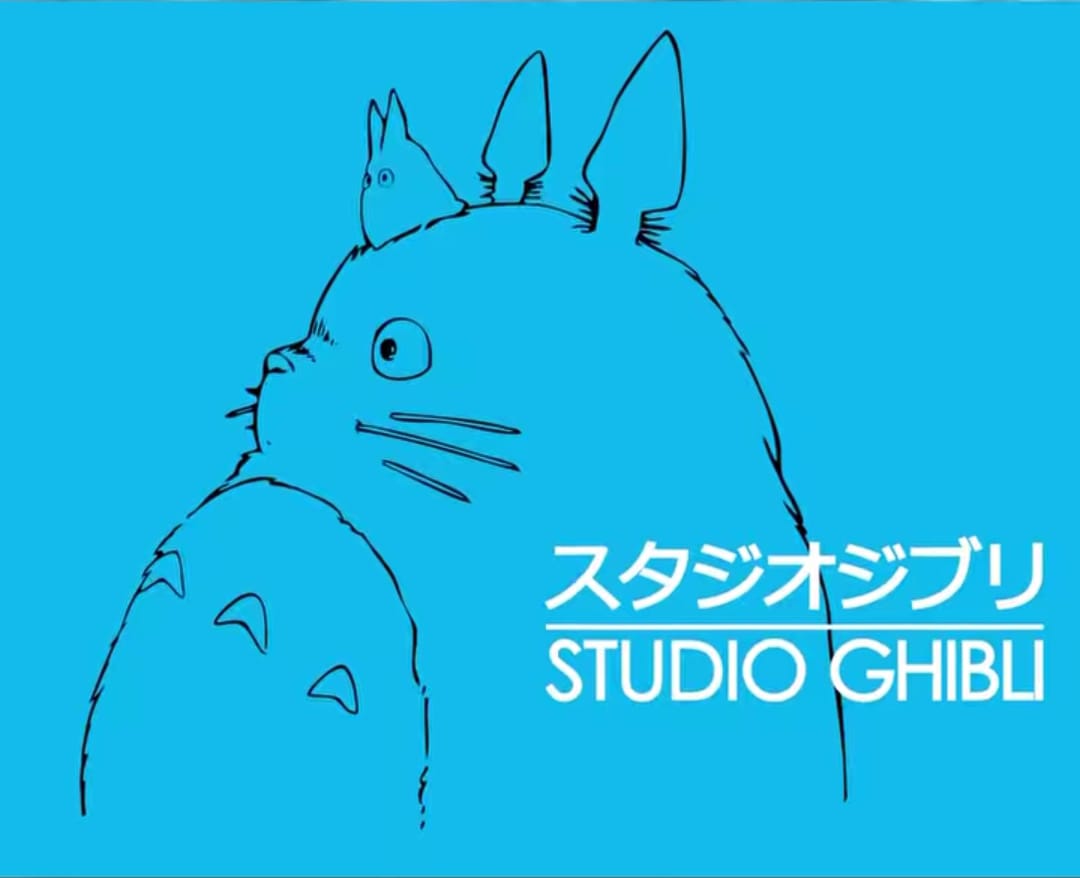Studio Ghibli:
Studio Ghibli, the most renowned animation studio in Japan, has enchanted audiences worldwide with its stunning visuals, deep narratives, and enduring themes. Established in 1985 by the creative minds of Hayao Miyazaki, Isao Takahata, and producer Toshio Suzuki, Studio Ghibli has transformed animation into a distinguished art form, merging elements of fantasy with human experience. Its films, ranging from My Neighbor Totoro to Spirited Away, are cherished for their imaginative storytelling, emotional richness, and broad resonance.
The Birth of Studio Ghibli: A Dream Takes Flight:
Inspired by the success of Nausicaä of the Valley of the Wind (1984), Miyazaki, Takahata, and Suzuki established Studio Ghibli in Tokyo. The name “Ghibli” derives from an Italian word for a hot Saharan wind, symbolizing their mission to “blow new energy into the anime industry.”
Early works:
- 1986 – Castle in the Sky: The studio’s debut film introduced Ghibli’s signature style: lush landscapes, flying machines, and themes of environmentalism.
- 1988 – My Neighbor Totoro: This heartwarming tale of childhood wonder became Ghibli’s mascot, with Totoro adorning the studio’s logo.
- 1988 – Grave of the Fireflies: A poignant anti-war film directed by Takahata that demonstrates Ghibli’s ability to tackle mature themes.
The Golden Age: 1990 to 2000:
The 1990s established Studio Ghibli as a dominant force in the field of animation.
Iconic Films:
- 1997 – Princess Mononoke: A landmark ecological epic that broke Japanese box office records, merging myth with environmental activism.
- 2001 – Spirited Away: Miyazaki’s masterpiece won the Academy Award for Best Animated Feature (2003), introducing Ghibli to mainstream Western audiences.
- 2004 – Howl’s Moving Castle: A fantastical exploration of love and war, adapted from Diana Wynne Jones’ novel.
Miyazaki “Retirements”
Miyazaki famously announced his retirement multiple times, only to return, including after Princess Mononoke (1997) and The Wind Rises (2013).
Global Recognition and Collaboration:
While Ghibli initially focused on Japan, partnerships with Disney and Pixar in the 2000s brought subtitled and dubbed versions worldwide. Streaming platforms like HBO Max and Netflix later expanded accessibility, cementing its international fanbase.
Recognition Across Frontiers:
- Spirited Away remains the highest-grossing film in Japanese history.
- The studio’s works are studied in film schools for their hand-drawn artistry and narrative complexity.
Thematic Elements and Enduring Impact: The Appeal of Studio Ghibli
Studio Ghibli films explore universal themes:
- Environmentalism: Nausicaä and Princess Mononoke warned against ecological destruction.
- Feminism: Strong female protagonists like Chihiro (Spirited Away) and Sophie (Howl’s Moving Castle) defy stereotypes.
- Childhood and Nostalgia: Films like Kiki’s Delivery Service (1989) celebrate growth and resilience.
Cultural Impact:
- The Ghibli Museum in Mitaka, Tokyo, immerses visitors in the studio’s whimsical worlds.
- Collaborations with brands like Uniqlo and Loewe highlight Ghibli’s enduring influence on pop culture.
Challenges and the Future:
In 2014, Studio Ghibli paused production after Miyazaki’s second retirement announcement. However, the studio returned with:
- 2020 – Earwig and the Witch: Its first 3D CGI film, directed by Miyazaki’s son, Goro.
- 2023 – The Boy and the Heron: Miyazaki’s latest (and possibly final) film, which grossed over $168 million globally.
The Studio’s Future:
While Miyazaki’s eventual retirement looms, Studio Ghibli’s legacy continues through its catalog, museum, and new talent. A theme park, Ghibli Park, opened in Japan in 2022, further celebrating its magical universe.
Conclusion: Studio Ghibli’s Eternal Magic:
Studio Ghibli’s journey—from a small Tokyo studio to a global cultural phenomenon—proves the power of storytelling that speaks to the heart. Its films transcend age and culture, offering hope, wonder, and a reminder of humanity’s connection to nature. As Hayao Miyazaki once said, “Fantasy is a necessary ingredient in living.”

